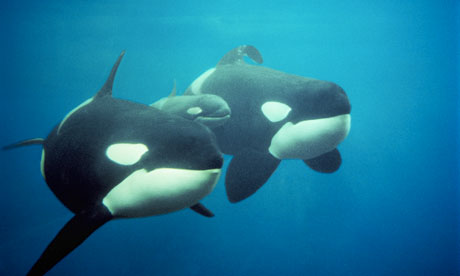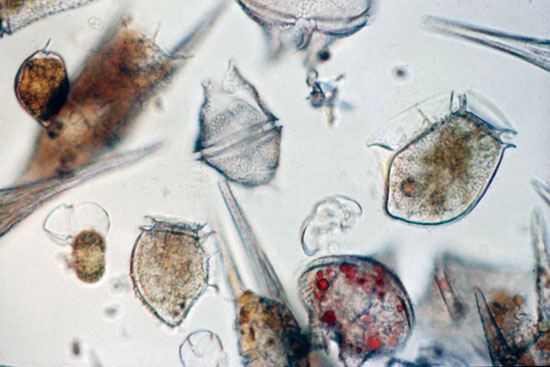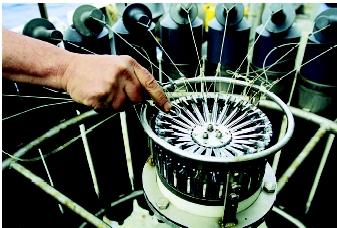There are Black, Red, and White mangrove trees. Black mangroves have tubular vertical roots that absorb and take in oxygen. Red mangroves have an elaborate prop and aerial root system that stabilizes the trees. White mangroves are the shortest and have un-buttressed roots. Mangroves provide homes, food, and break down pollutants. They also protect vulnerable coastlines from tropical storms and they also prevent coastal erosion. They can be used for charcoal and also fishing poles which benefits the fishing industry.
Monday, February 25, 2013
Ocean Garbage Patch
The Ocean Garbage Patch is located in the North Pacific Ocean and gyre of marine debris like plastics, chemical sludge, and other debris which was formed by the currents of the North Pacific Gyre. It can end up in the stomachs of many marine life and cause death because the animals' digestion can not break down the debris. Man can help clean up and safely remove plastic and debris from the oceans, and also man can recycle plastics so they do not end up in the ocean.
Loggerhead turtle
The Loggerhead Sea Turtle, or Caretta caretta, lives in all but some of the coldest oceans in the world. They have forelimbs that are modified into paddle-like flippers for swimming. They are currently endangered and their nesting populations are decreasing even though they are receiving protection. The sea turtle is my favorite animal, and I prefer this one to the others because it is the largest.
Ocean Acidification
It is the ongoing decrease in the pH of Earth's oceans that is caused by Carbon Dioxide in the atmosphere. It causes planktonic and benthic organisms to become weaker and face dissolution. Humans burning fossil fuels and using CO2 on land is contributing to it. We can extract carbonic acid for use in making synthetic fuel. I learned that one third of all carbon dioxide emitted by humanity has been absorbed by the world’s oceans and that we are destroying approximately one coral reef everyday. I also learned that coral reefs are being lost more than twice as fast as the rainforests.
Wednesday, February 20, 2013
5 facts about Plankton
- Plankton are viewed as the foundation for food webs in the oceanic ecosystem.The plankton provide a source of food for larger organisms such as fish, crustaceans and even whales.
Phytoplankton are a type of plankton that use photosynthesis to provide energy to the rest of the body.
- Phytoplankton serve as the food source for zooplankton.
Zooplankton are oceanic animals that rarely swim. Instead, the organisms drift and move using currents and waves in the body of water.
Killer Whales
The killer whale, or orca, or Orcinus orca as it is known in the scientific community is the largest apex predator in the world. They are normally found in cold, coastal waters, but they can also be seen from the polar regions to the Equator. They are very protective of their young and give birth every 3 to 10 years after a 17 month pregnancy. Killer whales are widely distributed across the oceans and therefore not in any danger at this moment. They can live from 50 to 80 years and weigh up to 6 tons. In 2012 it was found that killer whales are inhaling bacteria, fungi and viruses once believed to be found only on land. Some of the viruses were antibiotic-resistant. I chose this mammal because of it's unique stance at the top of the food chain.
Plankton Race
The most difficult part was getting a "plankton" to sink. Our "plankton" would float forever and never drop below the water level because of the little amount of surface tension it was getting.
If I could start this over again, I would build it similar to the group next to us that used less materials and created a much larger surface area which really slowed it down when it sank.
The best part of this activity was the ability to create your own unique way of getting a "plankton" to sink as slowly as possible. Everybody's was different and had different times, so there was many options to take during this activity.
If I could start this over again, I would build it similar to the group next to us that used less materials and created a much larger surface area which really slowed it down when it sank.
The best part of this activity was the ability to create your own unique way of getting a "plankton" to sink as slowly as possible. Everybody's was different and had different times, so there was many options to take during this activity.
Harmful Algae Bloom
Harmful algal blooms are algal bloom events involving toxic or otherwise harmful phytoplankton such as dinoflagellates of the genus Alexandrium and Karenia, or diatoms of the genus Pseudo-nitzschia.
Two common causes are nutrient enrichment and warm waters. Many different types of phytoplankton are responsible are HABs.
Lowering the nutrients, light and temperature available to the blue-green algae in the water supply will help reduce algal growth.
A single red tide event in the Gulf Coast of Florida costs about $20 million, including losses to the tourism industry, hotel/motel suppliers, commercial fisheries, and local governments for the expense of beach cleanup.
Sunday, February 10, 2013
Plankton's Importance and Diatoms/Dinoflagellates
Many animals feed off of plankton, but too much can block sunlight and plants will die. However, phytoplankton produces much of the Earth's oxygen supply which is needed (obviously) for humans to survive. They show scientists where ocean currents provide nutrients for plant growth. The differences between diatoms and dinoflagellates is that diatoms have a silica cell wall, and dinoflagellates have flagella.
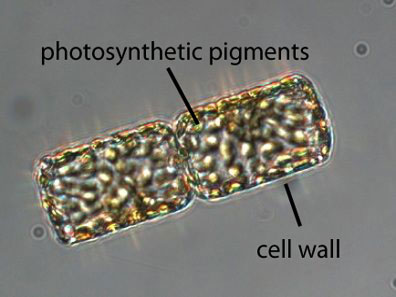 |
| Diatom |
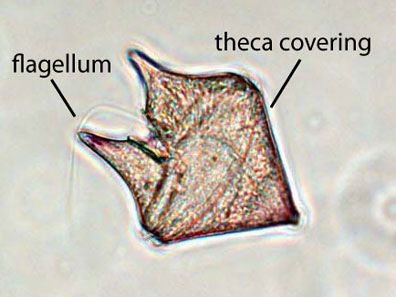 |
| Dinoflagellate |
Fireworm
It's common name is the fireworm, but it is known in the scientific community as Eurythoe complanata. It has white spines that break off into the skin which can cause horrible burning and itching. It's habitat is along the low-tide line up to 50 feet deep, coral reefs, and flat sea bottoms. It is currently not listed as endangered or threatened. The Fireworm has 4 eyes and 5 tentacles. It moves by contracting and elongating its body shape. I chose this animal because of its interesting look and its method of attack and self defense.
 |
| An up and personal look at a fireworm. |
The Fram
The Fram, which was headed by Fidtjof Nansen, was launched on October 26th, 1892. It was one of the most famous ships of the world at that time, and it was one of only a few ships that was built for a polar expeditionary purpose. The ship, with engines and boilers, was calculated to weigh about 420 tons. It was said to have traveled farther north and south than any other wooden ship, and it is now preserved in a museum in Norway. It is important because it reached the North Pole and proved that land was there and not just frozen ice.
 |
| The Fram preserved in Norway |
The Study Of The Ocean
I think that Magellan's journey to prove that the world was round was a major event that changed the study of the ocean. We now knew that the world wrapped around and that the oceans that surrounded the land had an end and also had no end, since they went around and around. We knew that there was a depth because it had to end somewhere. Exploration of the ocean and the rest of the world began to increase after this.
 |
| Magellan's Journey |
Why should we study the ocean?
Why should we study the ocean? Well it is the largest source of food on the planet, and it provides a huge majority of the air we need to breathe. Many new medicinal discoveries have come out of it, and the raw materials found in the ocean help build our society today. Also the ocean affects the climate that we have to deal with every day. So many people travel over the sea and we use it as a means of transportation. It needs to be studied so we can understand all of the things we are getting out of it, and so we can find more helpful things in it.
 |
| Medicine from the Ocean |
Sunday, February 3, 2013
Boat Race
I wasn't able to test my boat due to the high dryer being damaged before any attempts. I am sure that I would have been successful and I will see how it goes on Monday...
Styrofoam Boat
My boat design varied from using water bottles to tin foil to styrofoam. I found out that styrofoam works the best because the water bottles never floated straight, and the tin foil always lost its form. I set up my boat in my bathtub but decided not to risk putting the hairdryer anywhere near the water. I couldn't take any pictures of my boat but I have a picture of a very elaborate boat made of styrofoam.
The Batfish
The batfish is a very unique fish that has many interesting qualities. It's scientific name, Ogcocephalidae, is a doozy to pronounce. One of its adaptations is that the pectoral, pelvic, and anal fins are modified to where it can look like it is walking on its fins. Most batfish are found around reefs and deeper water. It is not listed as an endangered or threatened species. I was interested in the batfish mainly because of its name.
Oceanographer Instruments
Biological oceanographers use robotic underwater vehicles to reduce risk of submarines and submersibles that are manned and provide great views of the underwater life.
Physical oceanographers use a tide gage to measure the wave height in deep water.
Chemical oceanographers use deepwater sampling devices like the one in the picture below to study processes that occur in the depths of the oceans.
Geological oceanographers use satellite mapping to study the structure and topography of the ocean floor.
Physical oceanographers use a tide gage to measure the wave height in deep water.
Chemical oceanographers use deepwater sampling devices like the one in the picture below to study processes that occur in the depths of the oceans.
Geological oceanographers use satellite mapping to study the structure and topography of the ocean floor.
Why We Explore
Bob Ballard is extremely correct by saying that we should explore our oceans before going into the unknown. Our world has plenty more to offer, and outer space can wait. I feel that our government is spending way too much time and money on a program that hasn't accomplished anything revolutionary since 1969. We don't know what the oceans contain, but more people should be eager to understand what it has to offer.
Subscribe to:
Posts (Atom)





